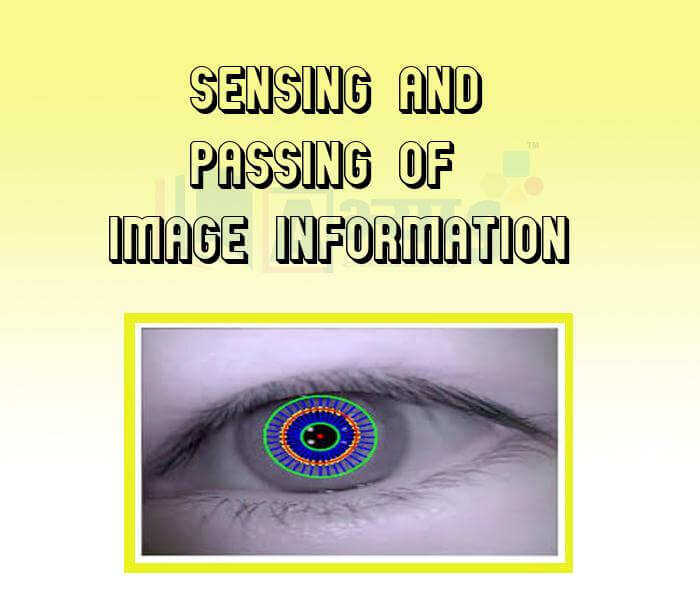Sensing and passing of image information










Sensing and Passing of Image Information
Sensing And Passing On Image Information
The image formed by the eye-lens on the retina is real, inverted and much smaller than the actual size of the object. The eye passes on image information to the brain. The brain processes this information to show us an erect image, which is much larger than that formed on the retina.
To sense image information, the retina has two types of sense receptors. They are called rods and cones (named so because that is how they look under high magnification). There are about 10 million cones and 100 million rods on the retina. The rods can sense very small amounts of light, while the cones need more light to perform their task of sensing colours and details. That is why in dim light we are able to see shapes but not colours and details. The rods and cones are actually the ends of special light-sensitive nerve cells. The long fibres (or axons) of these nerve cells come together at a point on the retina to form an optic nerve, which is connected to the brain. When light falls on the rods and cones, electrical signals are generated.

The image formed by the eye lens on the retina is _________________ | |||
| Right Option : C | |||
| View Explanation | |||
The blind spot refers to the area where _____________. | |||
| Right Option : B | |||
| View Explanation | |||
Which cells respond to colour of light ? | |||
| Right Option : C | |||
| View Explanation | |||
Students / Parents Reviews [10]
It has a great methodology. Students here can get analysis to their test quickly.We can learn easily through PPTs and the testing methods are good. We know that where we have to practice

Barkha Arora
10thA marvelous experience with Abhyas. I am glad to share that my ward has achieved more than enough at the Ambala ABHYAS centre. Years have passed on and more and more he has gained. May the centre flourish and develop day by day by the grace of God.

Archit Segal
7thAbhyas is a complete education Institute. Here extreme care is taken by teacher with the help of regular exam. Extra classes also conducted by the institute, if the student is weak.

Om Umang
10thMy experience with Abhyas academy is very good. I did not think that my every subject coming here will be so strong. The main thing is that the online tests had made me learn here more things.

Hiya Gupta
8thIt was a good experience with Abhyas Academy. I even faced problems in starting but slowly and steadily overcomed. Especially reasoning classes helped me a lot.

Cheshta
10thIt was good as the experience because as we had come here we had been improved in a such envirnment created here.Extra is taught which is beneficial for future.

Eshan Arora
8thI have spent a wonderful time in Abhyas academy. It has made my reasoning more apt, English more stronger and Maths an interesting subject for me. It has given me a habbit of self studying

Yatharthi Sharma
10thAbhyas Methodology is very good. It is based on according to student and each child manages accordingly to its properly. Methodology has improved the abilities of students to shine them in future.

Manish Kumar
10thMy experience with Abhyas is very good. I have learnt many things here like vedic maths and reasoning also. Teachers here first take our doubts and then there are assignments to verify our weak points.

Shivam Rana
7thOne of the best institutes to develope a child interest in studies.Provides SST and English knowledge also unlike other institutes. Teachers are co operative and friendly online tests andPPT develope practical knowledge also.
